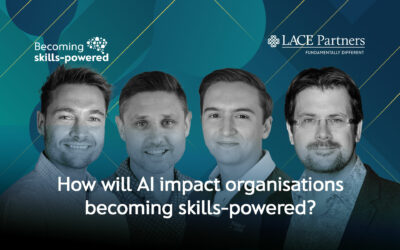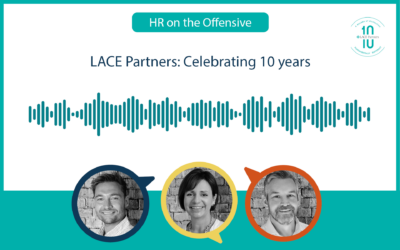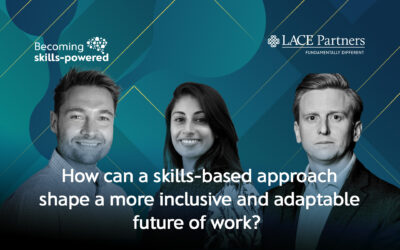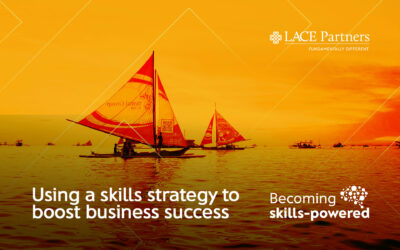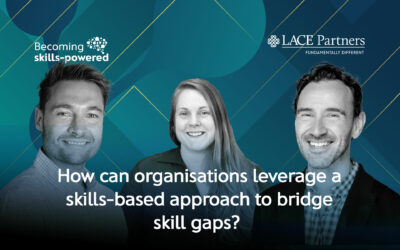In 2021 we hosted a forum to discuss employee experience with a group of EX practitioners. Chris and Aaron from LACE Partners recently sat down with Katie Wilde from Applaud to discuss the key points and discussions which were raised as part of this community session. Neil from our team has provided today’s overview and picked out some of the most interesting reflections from Aaron and Katie.
Employee experience: how has it changed?
In the last few years employee experience (EX) as a concept has changed drastically. It is no longer a fringe benefit conjuring up images of pool tables and beer fridges in offices. Across sectors there has been a widescale focus on employee experience to the point we are starting to see job listings for employee experience penetrating all the way through organisations from entry to director level.
Alongside the wide scale adoption of employee experience strategy it is interesting to note that there is also a wide variety within EX-role descriptions – indicating a range of understanding of what the term means. One of the key talking points from the event in November, observed by the group of EX professionals gathered to debate the changes that has been seen, was a broader agreement that an employee experience approach should align with their expectations of the people in the business and should be designed as a seamless and smooth experience for all employees.
As new generations of employees enter the workforce, they bring with them new requirements for work. Increasingly evident is the trend with these employees that the desire to work in workplaces that align with their own values. As a result, organisations are asking how to align themselves and keep aligned to the values which attracted these employees in the first place.
COVID and employee experience
When considering the changes to the employee experience brought about by COVID, common consensus from the forum rested on the impact of the ‘Great Resignation’ and, indeed, at LACE we’ve written a piece focused on them impact (How should HR respond to ‘The Great Resignation’?’). The goal of the employee experience professional is to fight this new trend and understand the new drivers and motivations for individuals working within their business. In this regard the forum reflected that it would be better to refer to the Great Resignation as more of a re-evaluation of work, life, values, and priorities. This re-assessment is key in understanding what changes in objectives the people of an organisation may have and what influence it will have on their day-to-day roles.
COVID has provided people with a platform to assess the purpose they want to fill. Employees have had unprecedented opportunity to work from home over the last two years and with the end of lockdown restrictions looming, companies are asking; ‘how do we keep this balance?’
A big talking point from the forum included a discussion on how EX professionals are having to design initiatives for employees who want to work from home full time, those who would rather be in office and those who desire a hybrid model. People can see opportunity and different patterns across the spectrum and are reaching a point where if their organisation does not match their requirements then they will find one which does.
Employee experience: a diverse capability
From one organisation to another employee experience means something different. As true as the phrase ‘no two companies are the same’ is, companies should all treat their employee experience approach differently. As we reflect on recent changes in EX capabilities, we can see it beginning to absorb elements, such as workplace design from other business functions. A differentiation can be made between your organisation’s EX strategy, as well as its digital EX strategy – however they must always be considered in connection with each other and the wider business strategy (see our blog ‘The Hidden Cost of the Digital Employee Experience’ for more examples on the impact of getting your digital EX strategy wrong). In these two roles alone, the forum agreed seeing incredibly different capabilities required. To really firm up their new position in organisation Employee Experience teams will have to be operating with greater than ever agility to ensure their workplaces are truly aligned with their people’s priorities.
To identify the capabilities required organisations will need to keep their focus on their employee personas. As it stands companies have a monumental focus on ‘how do we engage with our customers,’ looking at everything in the customer life cycle and continuously improving on it. There is a challenge for HR teams in getting organisations to see their employees as another form of customer.
Key challenge questions included:
- What is setting us apart and attracting the key talent to us over a competitor?
- What are our touch points with employees? How often should they be?
- How do we keep them engaged with us as a company and aligned with our workforces’ values?
To build this capability we are seeing people from across the business (reward, compensation and benefits etc.) are transitioning to employee experience roles, bringing fresh perspectives.
Getting employee experience right
When approaching employee experience, it is imperative that organisations understand ‘this is not a top-down process.’ Instead, it should be fed and developed with the key demographic in mind, the employee.
With the advent of review sites such as Glassdoor it becomes abundantly clear when something is wrong in a company culture, and it is much harder to get the five-star ratings on these sites than any other rating. Digital adoption technologies such as Applearn, or Onboarder improve understanding of experiences from the first moment of the employee life cycle. However, it is important to not to only leverage technology and ensure that the level of human interaction you are offering your employees is enough to build a relationship between that individual and the organisation.
HR teams have a range of existing listening points to measure their experience and engagement. Alongside traditional employee listening channels, such as surveys, many organisations are also introducing ‘culture ambassadors’ to teams. This is an unofficial role that employees take on to provide on the ground feedback on the workplace experiences they and their cohort may be having. These touch points can be used alongside quantitative data and other sources to generate evidence-based action plans.
Summary
Our employee experience community session underlined how EX continues to be a huge focus in the HR space. Without a robust EX strategy, organisations will struggle to attract and retain the best talent, which is already becoming evident with shifts in the market.
Organisations are increasingly aware that they may need to employ EX professionals, although very few can answer the question: ‘what exactly are the skills that are needed?’ More than this though, the skills are everchanging and with the volatile nature of work and changes we are seeing in workplaces. Despite this lack of clarity in the role description, employee experience has become a pillar of a highly competitive and successful People Function.
If you are interested in exploring employee experience more and want to understand the critical components to getting a firm understanding of what your employees want, we would be happy to help you. Simply fill in the form below:

